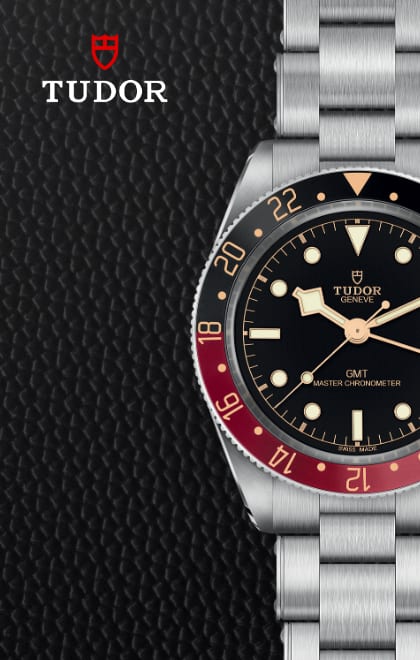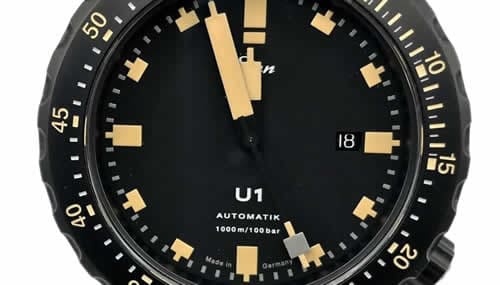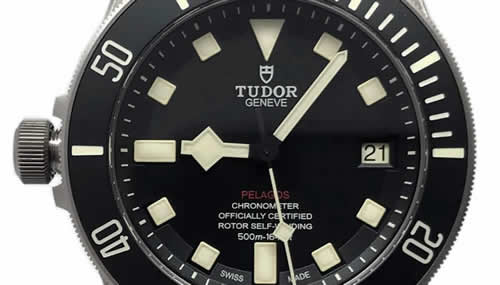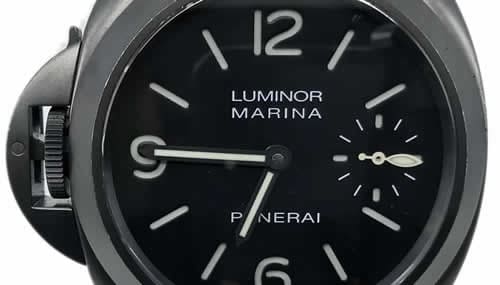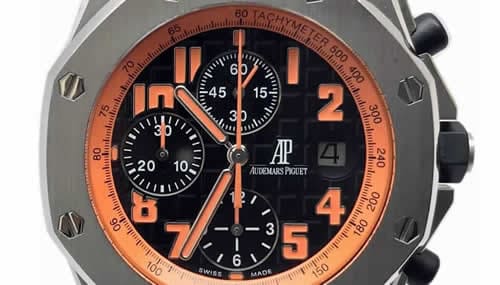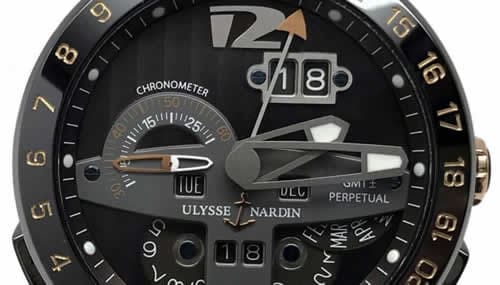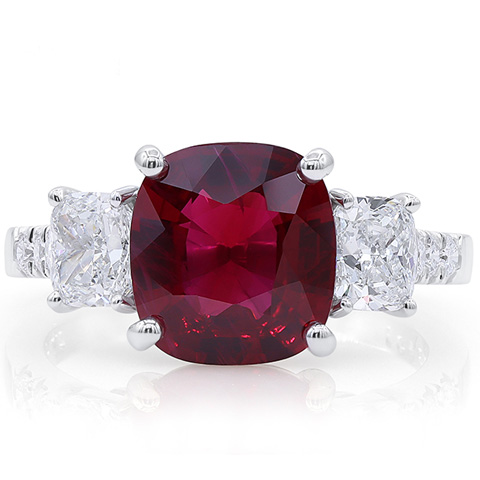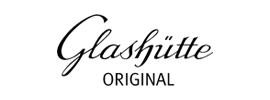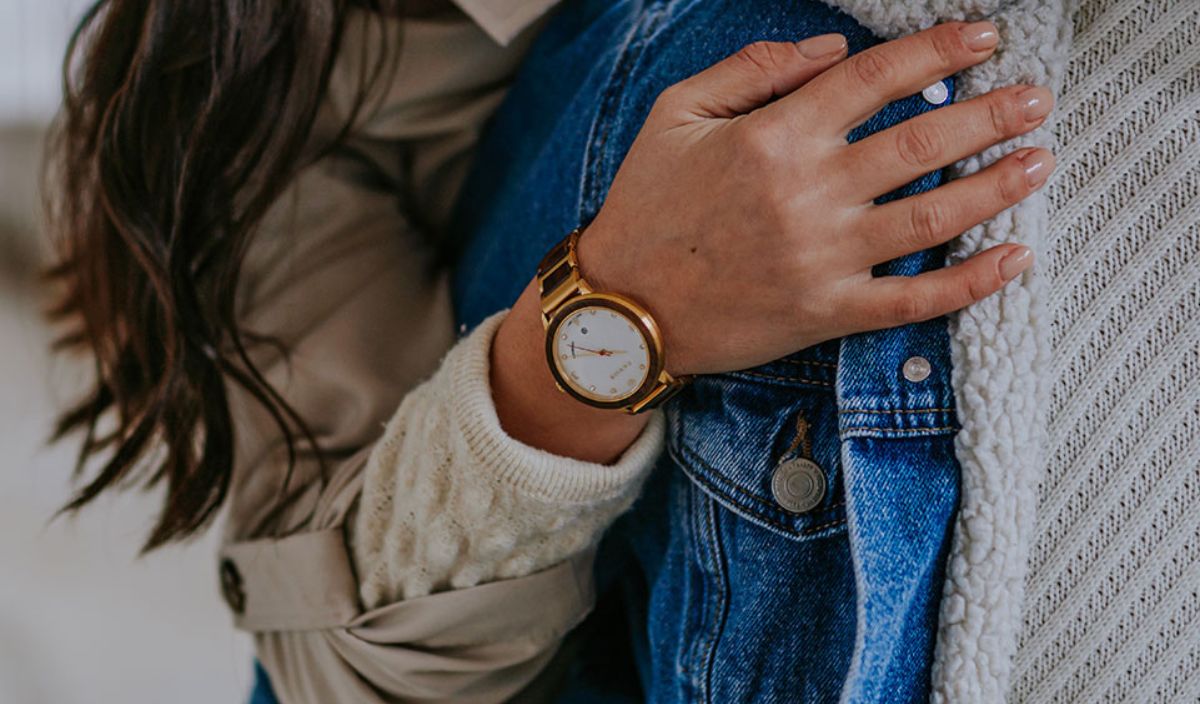
Your Watch, Your Way: How To Wear a Watch
It wasn’t just a silly-ass fad like so many skeptics believed at the time. Wearing bracelets with clocks attached to them began as a joke, but by 1916, it had become obligatory for soldiers to wear a watch on their wrist, having realized the convenience of fob watches on leather straps.
It freed up the hands of military personnel, enabling them to coordinate their maneuvers more precisely whilst readily ascertaining the time on the frontline.
After all, rummaging through your pockets for a watch whilst navigating the chaos of the trenches never made sense. God forbid it may even have cost a few lives.
Today, wristwatches sit on the wrists of most men. At least those who have good taste. In fact, I’d even go as far as to say that no men’s fashion accessory better perpetuates endless style than a wristwatch. No element of menswear inspires such intense passion and cultural following, either.
Indeed, there is a dedicated fan base for luxury wristwatches. They epitomize class and masculinity. And the history and complexity of these small but mighty instruments are subjects of great interest, too.
The hobby of watch collecting and, more specifically, the art of watch-wearing is an all-around mystifying, mesmerizing, bemusing, and highly complex subject. And it garners a lot of debate.
Off the back of all this are topics like “How should you wear a watch?” which we’ll cover today.
Why Wear a Watch?
Good question. When we have instant access to the time with the swipe of a touchscreen or a quick voice command, why would anyone choose to wear a watch? Technology has certainly come a long way since man’s first-ever wristwatch.
There’s also no denying that wristwatch sales began declining when the smartwatch arrived in the 2000s.
By 2009, sales had reached such a low it led many naysayers to believe the wristwatch could ever make a comeback. But very gradually, they have been on the rise ever since.
I say steadily. Lockdown brought about a boom in watch sales, where a resurgence in designs like the integrated sports watch had those with the dispensable income practically throwing their money at collectible Cartiers and Rolexes left, right, and center.
At the end of the day, watches are one of those things in life that people will always attach sentimental value to. They serve a functional purpose.
And regardless of whether we spend a large proportion of our day with our phones in our hands or not, tilting our wrist to read the time is just about the most natural and instinctive thing to do.
Traditional wristwatches will continue to keep time and never lose power unless you take them off and leave them to run their power reserves down. You don’t need to plug them in. You don’t need to recharge them.
Perhaps that’s one of the reasons they’ve stood the test of time so well. They’re one of the few men’s accessories out there that can be worn and utilized every single day, regardless of the occasion.
As well as all the obvious points above, wristwatches are often worn as status symbols. The earliest designs were expensive and reflected a high level of craftsmanship; for the most part, that remains true today.
One of the key developments in detecting social status amongst the human race was the switch from gauging wealth on physical characteristics like height and physique to determining status based on clothing and jewelry.
The emergence of pocket watches catapulted into a powerful social signal at a ridiculous rate, and only the rich could afford them.
Luxury timepieces are expensive pieces of jewelry still today, but in most cases, you get what you pay for. Nothing communicates “I’ve made it big” than a Rolex.
Even the more affordable watches on the market reflect a hint of personality and individual taste. Even with the mass production of watches driving prices down, quality wristwatches are still seen as the ultimate token of success and have maintained their status cache.
Above all, because the history of the wristwatch is deeply routed in pursuits like flying, diving, and racing, some evocative designs just feel so important to wear in today’s society.
A good quality timepiece will look and feel timeless, constituting a perfect heirloom, not to mention pairing well with a range of clothing styles.
How To Wear a Watch
So, now you know why people wear watches; the only thing left to do is master how to wear one correctly. And while, for the most part, there are no hard and fast rules based on how you should rock your favorite timepieces, there are some things to pay attention to, especially if you’re a beginner.
Figure Out Your Preferences
There are two basic facets to finding the right watch for your wrist. One is movement, and one is type. The movement relates to the mechanism that powers your watch. There are quartz-powered watches and mechanically driven ones.
Of the latter, there are two further sub-categories: manual winding and self-winding. The first requires you to manually wind the watch by hand each day, while the latter refers to a mechanism that relies on the movement of your wrist to give power to the watch.
The quartz movement is an entirely different movement altogether and generates power via a quartz crystal and battery. Either way, both types of movement require considerable research before taking the plunge.
If you’re looking for an easy, no-fuss timepiece, you may be more drawn to the more affordable quartz option. Alternatively, if you think you’d appreciate the complexity of the mechanical movement, there are many options on the market that range from affordable to high-end.
One of the advantages of the mechanical watch is that it’s often designed with an exhibition caseback, enabling you to view the movement whilst it performs.
Watch type is an even broader category to explore. Dress watches sit in the more elegant category and often feature a simplified, pared-back dial layout comprising a two or three-handed format with a date window.
Some feature a small running seconds complication instead, while others may be crafted from precious metal or feature a gold coating to achieve a more exuberant and refined finish.
The sports category is diverse, with designs ranging from the dive watch to classic chronographs and even pilot watches. Pilot watches also run into the field watch category.
These wristwatches are developed for combat use, featuring a practical, legible dial and fabric straps made from nylon or the popular NATO Strap.
Dive watches offer the advantage of better water resistance, so you may opt for this genre of watch if you work closely with water or tend to do a lot of swimming or snorkeling in your spare time.
Likewise, the chronograph design is rather diversified. You can opt for anything from an elegant flyback complication to the sporty racing watch type.
Figuring out the correct type of watch is the lengthiest part of the process. Once you know what you like, there are just a few other things to consider.
Sizing
Like anything you wear, whether it be a shirt or a belt, a watch strap should fit you correctly and comfortably. Focus on two things here: the diameter of the watch (and, therefore, the size of the dial) and the watch strap.
There’s a simple and easy way to figure out your wrist size. Wrap a piece of tape around your wrist and measure your circumference.
A small wrist is anything measuring around the 6 inches mark. If you have a small wrist, stick to case diameters of around 34-36mm.
Tricky, I know, as there aren’t all that many watches for men sitting in this size range! Field watches, however, tend to offer the best scope for this case size. You could even stretch to around 38mm.
Anything in the middle bracket will measure around 7-7.5 inches. This is the most common wrist size and is able to carry case sizes of around 39mm, 40mm, or 41mm. An 8-inch wrist is large and should be able to carry off a case size of around 44-46mm or even 47mm!
For band sizes? You don’t want your watch strap or bracelet to be too loose on your wrist. Metal bracelets and the watch dial itself can become damaged if your bracelet is swirling around on your wrist while you move.
Likewise, a leather or rubber strap that fits too tight will leave indentations on the skin and can even cause your wrist to swell.
Always ensure you can fit at least two fingers down the side of your strap. This will allow your skin to breathe when you get hot and allow for any necessary expansion.
Be Aware of Water Resistance
I mentioned earlier that dive watches are best suited to those who frequently take to the water. But even if you’re not planning on swimming with your watch, you should be aware of the watch’s water-resistant rating.
Submerging your watch into water can cause damage to the internal mechanics of the watch. And water resistance doesn’t work how you’d imagine it to, anyway.
A water-resistant watch of 100 meters doesn’t necessarily mean you can take it to depths of 100m. Moreover, the water-resistant rating of a watch refers to the pressure it can withstand underwater.
For the most part, a 50-100M water-resistant watch will suffice for general day-to-day tasks. For anything water-related, you need to look for watches with at least a 200M+ water resistance.
Which Wrist?
Here’s the bottom line. You can wear a watch on your left or right wrist. Tradition has had us believe for far too long that there are set-in-stone rules about which wrist you can wear a watch on. In this day and age, anything goes. People can wear a watch on the left wrist, the right wrist, or both simultaneously.
Most connoisseurs advise that you should wear your wrist on your less dominant hand, and to an extent, this makes some practical sense.
A watch worn on the less dominant hand will avoid the most impact and damage. But really, it’s more about what feels more comfortable for you. Nobody will judge you, whatever wrist you decide to wear your watch on.
Variation
If you can afford to expand your wristwatch collection to at least a couple of different styles, that’s great. While not all budgets will allow for it, building up a more diversified watch collection will allow you to easily tailor the right watch for a specific outfit.
If you only own one special watch, acquiring a daily beater to wear throughout the week and for everyday tasks like yard work is a good idea. And giving your favorite watch a break every so often may preserve it for longer since it won’t be exposed to as much damage.
In an ideal world, you’d have a watch for dining out, the gym, sporting events, and work. Either way, a small collection of reputable brands can be more beneficial than owning one ultimate gold Rolex.
Pairing Watches with Outfits
It’s important to find the right watch to match your outfit if you want to up your sartorial game. Luckily, there is no shortage of styles, as I mentioned earlier.
You wouldn’t want to wear your favorite elegant dress watch on a choppy boat out at sea, just like you wouldn’t necessarily wear a dive watch with a suit (yes, James Bond did it, but it doesn’t mean you have to!).
Try to match your watch to the occasion in question. Think durable sports watches with athletic attire and something like a classic three-hander or calendar watch for the office.
Lighter dials are also nicer for summer or for wearing during the daytime, while a dark dial will complement evening attire nicely. It also pays to match your metals with your materials.
If you can match the case material of your watch with your belt buckle or the hardware on your shoes, you’ll inevitably create a more cohesive look.
It’s thinking about all the extra special touches that make the difference, like pairing yellow gold with yellow gold or wearing a watch on a leather strap to match your leather shoes.
In the meantime, a discreet diamond dot hour track can add a touch of class and style to a formal outfit, but bear in mind that flashy diamond-set cases and large, gaudy gemstones can look like a cry for attention. Everything in balance is key.
One way to add a whole load of variation to your collection is to have a supply of straps to rotate your watches with…
Wearing Watches with a Leather Strap
Leather straps are the most common type of watch strap. They give a wristwatch a timeless and elegant look. This organic, durable material finishes a timepiece off perfectly, especially the high-end dress watch.
There are three types of leather bands: genuine, full grain, and faux. The latter is made from plastic but resembles the look and feel of real genuine leather.
Genuine leather, however, is still affordable, while full-grain leather is the finest of all, promising a finish and a toughness that will last longer than any other.
Wearing Material Straps on a Watch
A material strap on a watch can transform aesthetics rather drastically. Take, for example, a classic-looking chronograph watch on a leather band.
Explore the
Biggest Pre-Owned Collection of Luxury Watches
Switching the leather band out for a material one like a striped NATO Strap or something similar can give the watch a strong field watch style in minutes.
However, the beauty of making these strap changes quickly and effortlessly is to opt for a watch with a quick-release strap option, which irradiates the need for using any strap removal tools.
Wearing a Watch on a Metal Bracelet
A metal bracelet is a complete class. It can elevate a sports watch or a chronograph in the simplest ways. Steel, of course, is the most affordable option, while platinum, gold, and silver can add a premium price tag to a watch.
Nevertheless, it’s all about what you prefer in a watch. If you want an ultra-refined statement piece to pair with your best attire, a gold or platinum bracelet will communicate that high-end feel effortlessly. However, a steel bracelet is incredibly corrosion-resistant and great for wearing daily.
Wearing Watches on Rubber Bands
Rubber watch straps are made from silicone or polyurethane. The former is the more expensive option and the one you’ll likely see on luxury dive watches.
Robust and supple, it’s a perfect option for wearing with sporty attire and for utilizing whilst partaking in outdoor pursuits. A rubber band will dry quickly and is perfect for those with athletic lifestyles.
The Social Implications of Wearing a Watch
You should be aware of social etiquette when wearing a wristwatch. Although a lot of traditions have very little relevance in our modern world, checking the time regularly on a watch can be seen as rude and impatient. After all, if you’re attending a special occasion, you should have no need to check the time.
Without even realizing it, you could give the host the impression you have somewhere more important to be. Some would even argue that you shouldn’t pair a dress watch with black tie attire, while others disagree and believe an elegant wristwatch finishes an outfit perfectly.
At the end of the day, it’s much more tactful to glance discreetly at your watch while tiling your wrist to sip a drink than to blatantly lift your jacket sleeve to check the time.
Some FAQs: How to Wear a Watch
If you’re still unsure whether you’re wearing your watch properly, these FAQs questions may help!
Where Should a Watch Sit on the Wrist?
You can typically feel your way to comfort when positioning a watch on your wrist. It’s common sense to position it slightly above the wrist bone but also in a way that it’s not too close to the hand or too far up the arm.
What is the Etiquette for Wearing a Watch?
The general rule of thumb for watch etiquette when attending a social event is not to check the time frequently on it. As functional as wristwatches are, there are some situations when using a watch to keep track of the time isn’t a good idea.
Should You Wear a Watch Over Your Cuff?
In short, no. You shouldn’t wear a watch over the cuff of your shirt or jacket. It’s the crime of all fashion crimes. And whilst I have expressed in this article that your own personal style is what you make it, there are some exceptions. And wearing a watch over your cuff is a complete no-no.
Conclusion
In recent times, the advent of the smartwatch, not to mention the use of laptops and the latest gadgets and gizmos, has made many of us believe the wristwatch may have met its demise. Yet, the timeless appeal of the luxury wristwatch persists. If anything, it’s more popular than ever.
While smartwatches combine the cutting-edge convenience of a color touchscreen with real-time health and wellness metrics and a host of GPS features, nothing beats the classic wristwatch. Luxury watches symbolise an age-old craft and have played a huge role in the evolution of timekeeping.
In addition to all the advice I’ve provided in this guide on how to wear a watch, the secret to enjoying your watch collection is simply wearing what makes you happy and wearing it with conviction.
The pointers above are just guidance. It will always be your prerogative on how you wear your watch, where you wear it, and what you wear it with!
About Exquisite Timepieces
Established in 1998, Exquisite Timepieces is your one-stop shop for all things luxury watches! We are an authorized dealer for 60+ luxury watch brands including Omega, Hublot, Seiko, & Longines! We are proud to showcase one of the world’s largest pre-owned watch collections, including renowned brands like Rolex and Patek Philippe. Check out our brand new watch arrivals here and popular pre-owned listings here.


